This list includes some common and less commonly found invasive species in East Texas, but not everything.
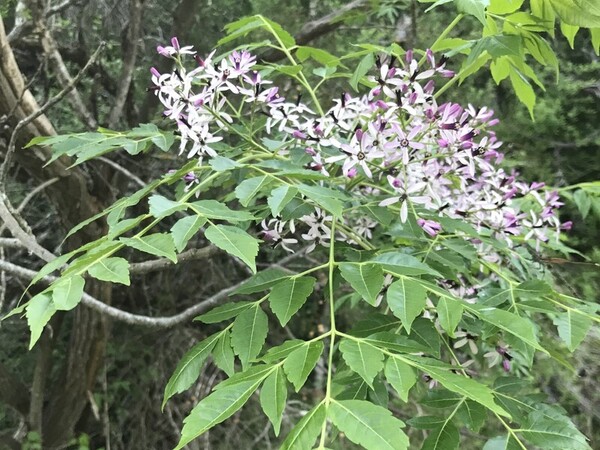
Chinaberry (Melia azedarach): Introduced from Asia in the mid-1800s as an ornamental tree. Dark green leaves are doubly compound, alternate, deciduous, and display bright yellow fall colors. Clusters of lavender flowers form spherical, yellow fruit about ½ inch in diameter that persists on the tree in winter. The bark, leaves, and fruit are poisonous to humans, some livestock and mammals, including cats and dogs.
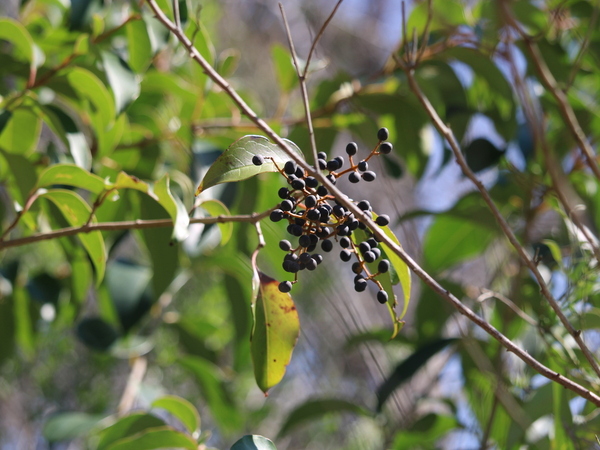
Chinese, Glossy, and Japanese Privets (Ligustrum spp.): Native to China and Europe and brought to the U.S. by the mid-1800s as ornamentals. Ligustrum can outcompete native vegetation and when not controlled can take over all the other plants, becoming the only one and changing the understory of a forest. Mostly evergreen, thicket-forming shrubs having opposite, elliptical leaves with smooth edges. Fragrant, white flowers form in spring and produce clusters of dark purple berries.

Chinese Tallow (Triadica sebifera): Also known as popcorn tree. Introduced from China around the 1700s as an ornamental and then in the 1900s the U.S. Department of Agriculture distributed it along the Gulf Coast to try to start a soap making industry. Deciduous tree reaching 60 feet in height. Readily invades open land and has oval shaped leaves that are alternate. During the fall the leaves display bright red coloring. Attractive white berries, also called popcorn berries, persist on the tree in the fall and winter.
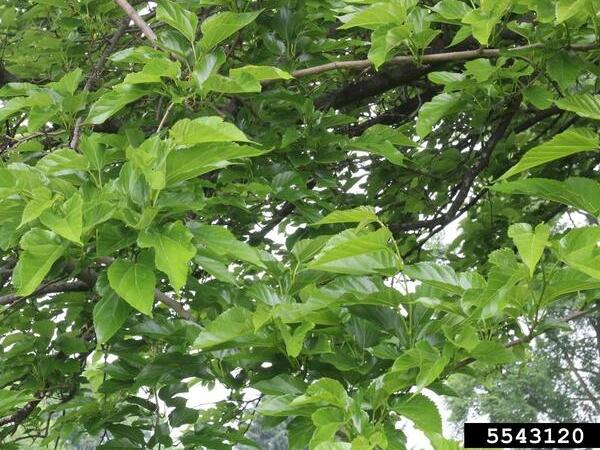
White Mulberry (Morus alba): Also known as common mulberry and silkworm mulberry, is native to China and India. A fast-growing tree with broad, glossy leaves, it can grow 40 to 60 feet tall. Its fruit can vary in color from white to red to deep purple. Fruit is readily eaten and dispersed by birds, leading to rapid spread.
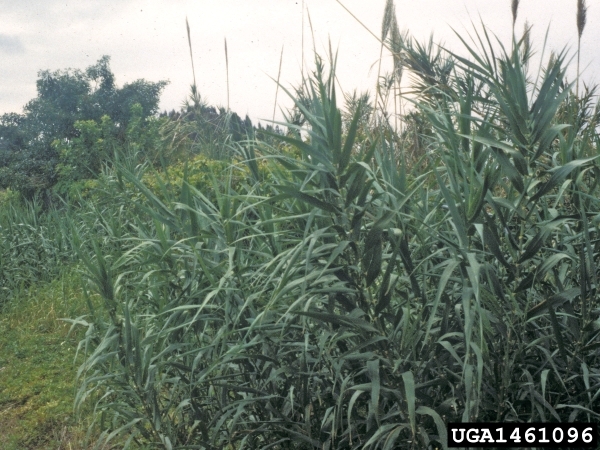
Giant Reed (Arundo donax): Introduced from Asia and Europe in the 1800s. Bamboo-like stems growing in thickets up to 20 feet tall. Alternate, corn-like, lanceolate leaves. Feathery flower clusters form dense plumes on the ends of stalks. It spreads aggressively in wetland and riparian areas. Rapid growth and extensive root system make it difficult to control and manage.
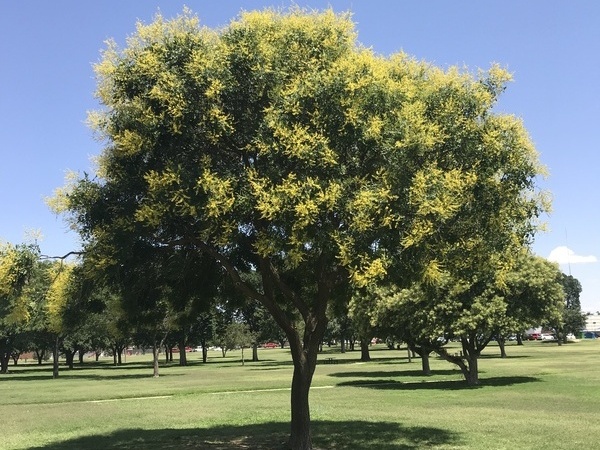
Golden Rain Tree (Koelreuteria paniculata): Native to East Asia. Grows 30 to 40 feet tall with an equal spread, in a broad, somewhat irregular globe shape. It has compound leaves and produces large, yellow flower clusters that turn into distinctive, papery seed pods. It is a fast grower and has great seed viability in warmer climates.
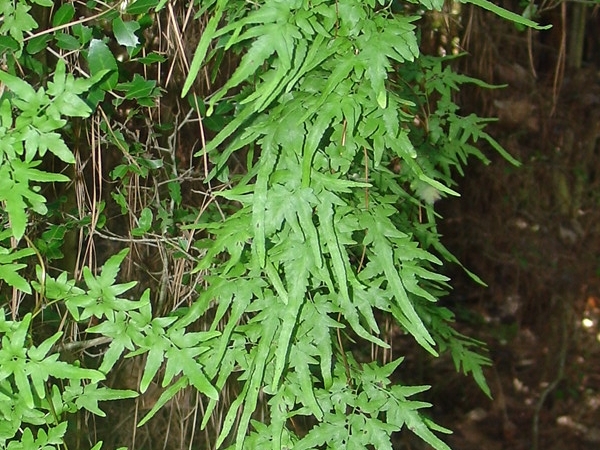
Japanese Climbing Fern (Lygodium japonicum): Native to Asia and Australia and brought to the U.S. in the 1930s as an ornamental plant. Climbing, twining, mat-forming fern that invades open forests, road edges, and wet areas. Leaves are mostly deciduous, opposite, compound, lacy and finely divided. Has the ability to cover large areas very quickly.
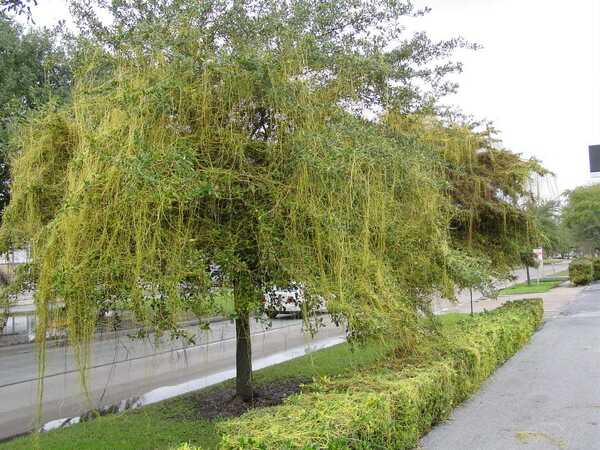
Giant Asian Dodder (Cuscuta japonica): First detected in Houston in 2001. A parasitic, yellow-green vine that resembles spaghetti. Able to attach itself to a wide variety of hosts ranging from herbaceous plants to woody ornamentals and trees. Flowers in the spring and produces an abundant crop of seeds about the size of coffee grains. Seeds usually germinate the first year but remain viable much longer. Can grow at a rate of six inches per day, rapidly spreading from one infected plant to another.
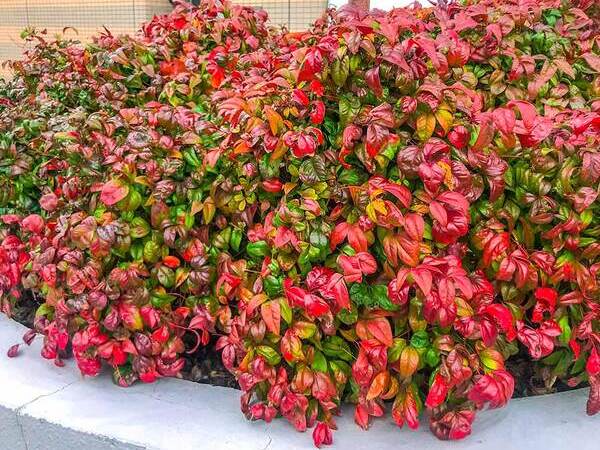
Nandina (Nandina domestica): Introduced from Asia and India in the early 1800s and widely planted as an ornamental. Evergreen, rigid shrub that grows up to eight feet in height, with multiple bushy stems that resemble bamboo. Glossy, compound green or reddish leaves, white to pinkish flowers in terminal clusters and bright red berries in fall and winter.
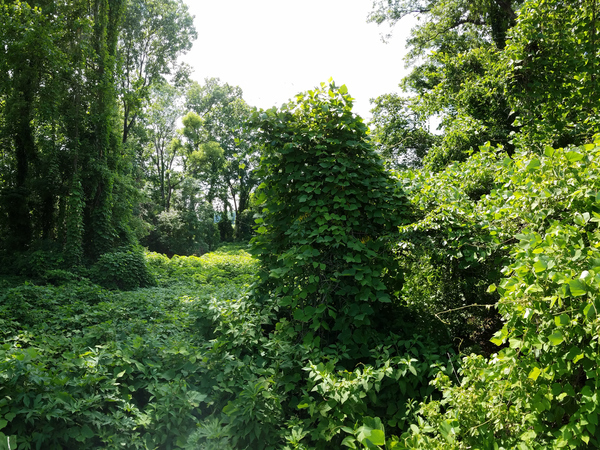
Kudzu (Pueraria montana var. lobata): Introduced from Japan and China in the early 1900s for erosion control. Deciduous, twining, mat-forming, ropelike, woody vine that can grow to 100 feet long. Leaves are alternate and compound with three leaflets. Stems are covered with dense hairs. Spreads aggressively, completely covering everything from shrubs to large trees with its dense foliage.
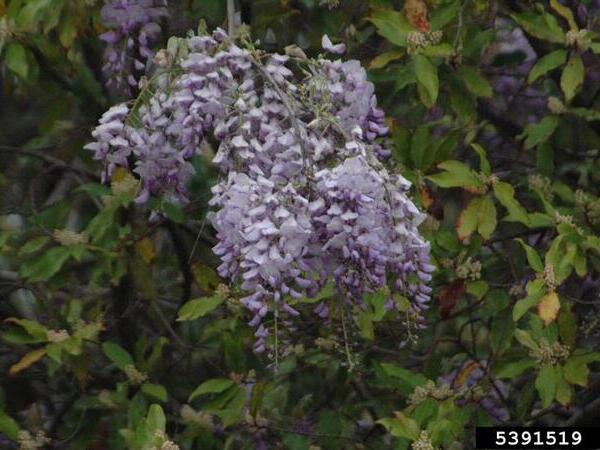
Chinese Wisteria (Wisteria sinensis): Introduced from Asia in the early 1800s as an ornamental. Deciduous, high-climbing woody vine with alternate, compound leaves up to 16 inches long. Large, fragrant, clusters of lavender to purple flowers in spring form bean-like seed pods in the fall. Spreads rapidly, often smothering trees, shrubs, and other plants with its dense, twining growth.
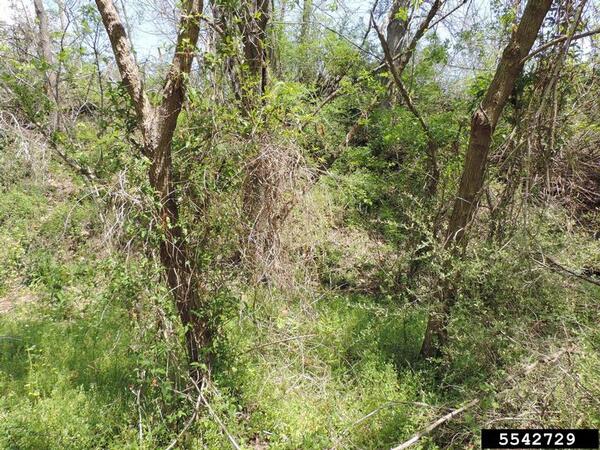
Japanese Honeysuckle (Lonicera japonica): Introduced from Japan in the early 1800s for erosion control and as an ornamental. Semi evergreen, woody vine with simple, opposite leaves. It produces white to yellow, and sometimes pink, fragrant, tubular flowers that turn into black berries from April through Sept. Spreads aggressively and forms dense mats that inhibit native vegetation.
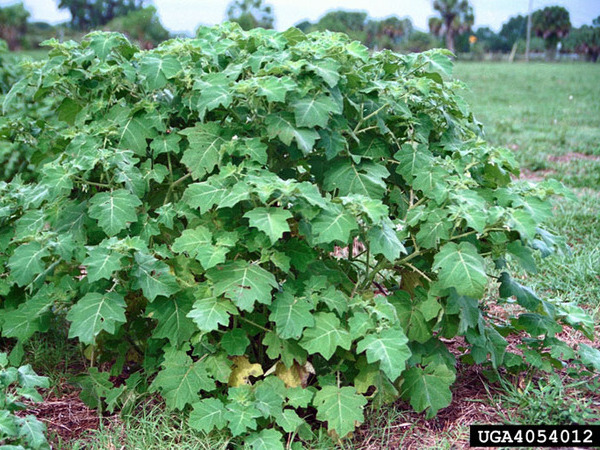
Tropical Soda Apple (Solanum viarum): Upright shrub with spiny, oak-like leaves growing three to six feet tall. Clusters of tiny, white to pale purple flowers with yellow centers produce round, golf ball sized fruits that start green and turn yellow when ripe. Fruits are covered in spines and contain many seeds, contributing to its rapid spread. Dense growth forms impenetrable thickets.
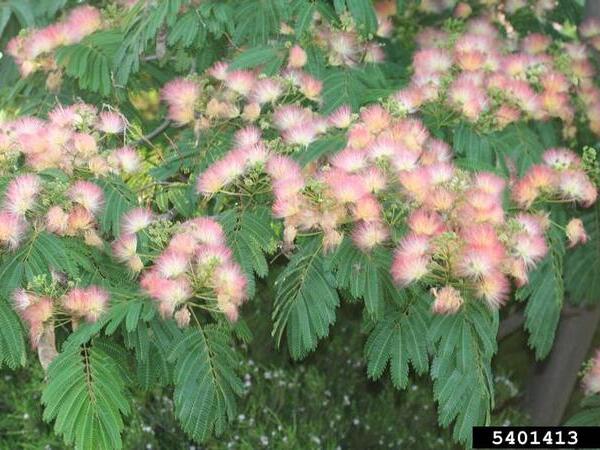
Mimosa (Albizia julibrissin): Also known as silk tree, was introduced from Asia in 1745 as an ornamental. Deciduous tree with alternate, doubly compound leaves and showy, fragrant pink blossoms. Legume, or bean, seedpods persist during winter. Leaves resemble those of honey locust.

Asian Bamboo (Phyllostachys spp. and Bambusa spp.): Native to Asia. Widely planted as ornamentals and for fishing poles. Perennial grass forming jointed cane stems and reaching heights of 40 feet. Leaves are long, narrow and often a golden yellow color. Forms dense, fast-growing clumps or thickets that block sunlight and crowd out other vegetation, especially in wet areas.